Creamy, subtle, and with just the right amount of sweetness — the much-loved latte is the object of every coffee lover’s affections. In our simple guide, we’ll show you how to brew the perfect latte from the comfort of your home.
 Espresso Machine
Espresso Machine
 Milk jug
Milk jug
 18g ground coffee
18g ground coffee
 Milk or milk alternative
Milk or milk alternative
Coffee and milk are the perfect pair, combined by budding brewers for centuries. So, nobody knows exactly when the latte was first conceived, with breakfast blends prepared across Europe, especially in Italy, for generations.
In Italy, it’s known as a caffè latte — literally translating to ‘coffee and milk’. However, the shorthand ‘latte’ which we know and love today first gained popularity in Seattle, Washington back in the 1980s. It soon spread across café menu boards internationally, but the name never caught on back in Italy — where asking for a ‘latte’ will earn you a simple glass of milk.
A latte is a milky coffee drink made with one or two shots of espresso, a generous helping of hot steamed milk, and topped with a small head of foam. This satisfying blend makes for a versatile, creamy beverage with a milder flavour profile than other coffee drinks. It’s this palatable flavour that makes the iconic latte one of the most popular brewed beverages around.


These are two undeniably similar brews — but the difference between the two is the amount of milk. A latte typically features more steamed milk than a flat white, with a ratio around 4:1 milk to espresso, and a little foam. On the other hand, a flat white is closer to 2 or sometimes 3:1, and is served in a smaller cup.
The average latte contains around 130mg of caffeine if two espresso shots are used as the base. However, the exact amount will vary depending on what kind of coffee bean is used.
We recommend fresh, whole dairy milk to make your latte, to create a silky mouthfeel when mixed with espresso. However, if you’re going dairy-free, an unsweetened alternative like almond, soy or oat milk will steam nicely — especially if you use a ‘barista’ formula which is made specially to be foamed.
Once you know how to make a latte, iced lattes are light work — you don’t even need to froth up your milk. Instead, pull your double shot of espresso and add milk and ice, then shake together until it’s chilled throughout. But remember, the ice will dilute your coffee — so you may want to add an extra flavouring or slightly less milk than you’d use for a hot latte.
While many enjoy a more classic brew, flavoured spins on the latte have recently grown in popularity. The versatile coffee drink can be combined with ingredients like turmeric, matcha and chai for a tasty twist, or blended using syrups like caramel, hazelnut, or chocolate. You might even have heard of a pumpkin spice latte, which incorporates pumpkin puree, nutmeg and cinnamon to warm you up in time for the changing seasons.